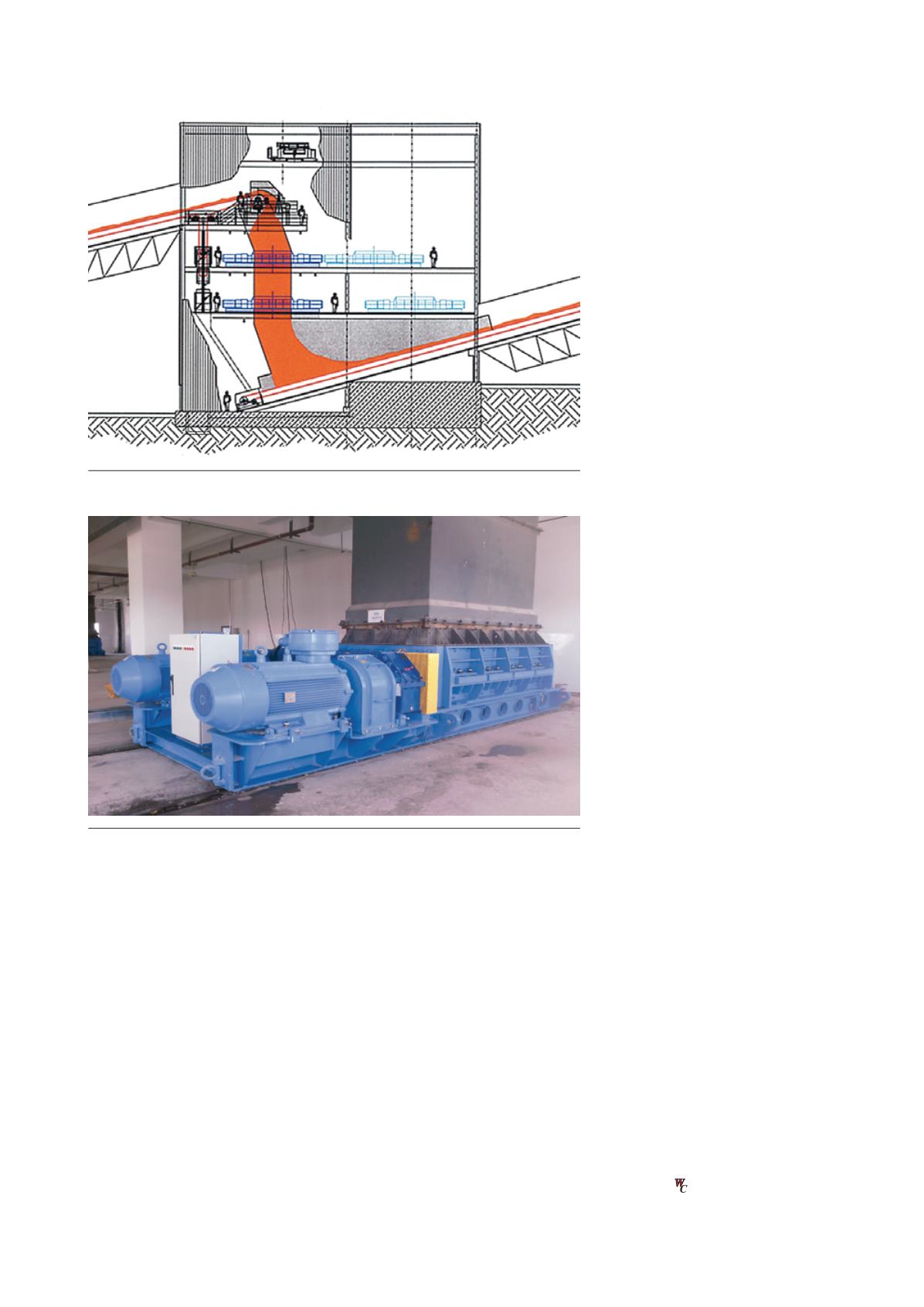
CenterSizers and one tertiary SideSizer,
resulting in an overall reduction ratio of
47. For primary crushing, a
DRS 1000 x 2250 without breaker bar is
used, which produces 2000 tph with a
grain size less than 400 mm. Following
this, the material is distributed to two
CenterSizers DRS 660 x 3000 C, which
produce 1000 tph each. The final crushing
to a product size under 30 mm is
performed by one DRS 660 x 3700 S with
a capacity of 2000 tph.
The machines in the above scenarios
were various standard ThyssenKrupp
RollSizers from the catalogue. Possible
variations in the size of the ROMmaterial,
capacity and final product size can easily
be accounted for by using different
machines of the catalogued series. The
figures set forth in these examples were
calculated under the assumption of
typical grain size distributions and
standard crushing characteristics. The
mentioned product sizes are measured on
square mesh according to DIN 66165 and
ISO 3310.
Example of application in
lignite crushing plant
The concept of one primary RollSizer
feeding two secondary RollSizers with a
split chute (Figure 7) was applied
successfully in a lignite crushing plant in
Germany, which processes more than
3000 tph of material with a grain size
below 50 mm. In this plant, the
RollSizers were arranged vertically with
material fed directly from the primary to
the secondary crushers. Due to this, the
height of the crushing plant could be
reduced to a minimum and in
combination with the omission of
intermediate hoppers and conveyors, a
layout was created, which kept the total
cost for the structure on the low end.
To guarantee easy access for
maintenance, the RollSizers were
mounted on slide rails, like the ones
shown on Figures 8 and 9. By changing
the direction of the slide rails, the
RollSizer could be moved either
longitudinally or transversely, according
to the client’s requirements.
The machines can be moved from
normal working position to maintenance
position, enabling easy access to all
components. In the shown crushing
plant layout, two production lines were
set up side by side, so that coal
production can continue, even if one
production line is under maintenance.
Summary
RollSizers can be used for primary,
secondary and tertiary crushing
applications of soft to moderately hard
materials. By installing these RollSizers
in a crushing plant, a high grade of
flexibility and cost effectiveness can be
achieved. In comparison to other
crushing solutions, the RollSizer can reap
benefits due to its compact and
sophisticated design, which is tailored to
the requirements of the coal industry.
The power consumption and wear rate
of RollSizers are particularly low due to
the screening effect, which allows finer
material to pass through the machine
without being crushed.
Choosing RollSizers out of a modular
mix-and-match system enables a quick
selection of suitable machines for a coal
crushing plant. Aproduct table, showing
all relevant process data of the
machines, assists engineers in the
selection. The detail design can be done
after pre-selection in cooperation with
the supplier. Due to the standardisation
of several components of each RollSizer,
it is possible to offer machines and spare
parts with an economical price and short
delivery time, without losing the ability
to provide machines suitable to a
specific task.
Figure 9. Rollsizer on slide rails.
Figure 8. Layout with RollSizers on slide rails.
48
|
World Coal
|
July 2015


